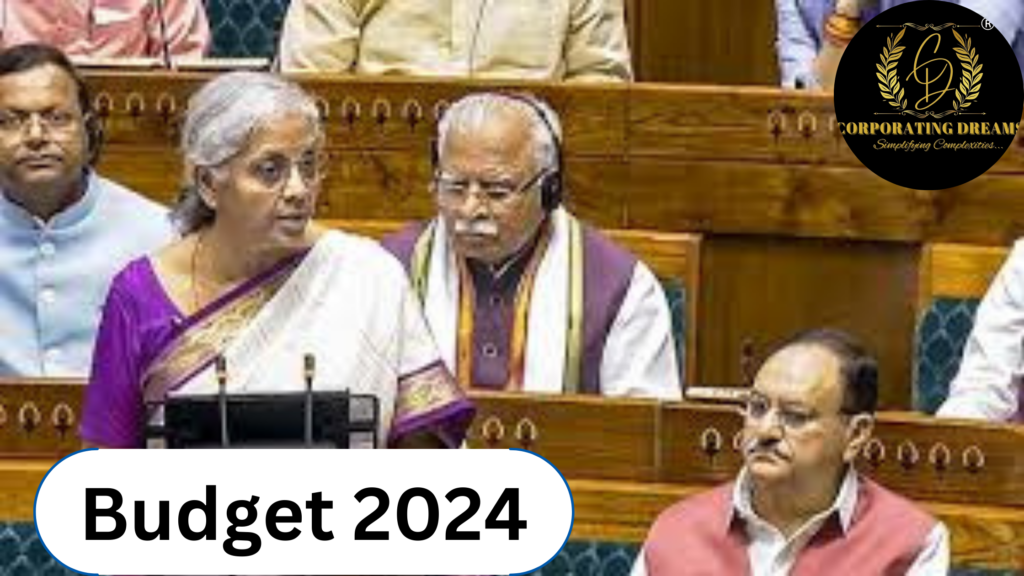
The Union Budget for 2024-25, presented by Finance Minister Nirmala Sitharaman, introduced several significant changes to the income tax regime in India. These alterations are aimed at simplifying the tax structure, increasing compliance, and providing relief to taxpayers. New Income Tax Slabs for FY 2024-25 One of the most notable announcements was the revision of the income tax slabs under the new tax regime.
The new slabs are as follows
Up to Rs 3 lakh: NIL tax
From Rs 3 lakh to Rs 7 lakh: 5% tax
From Rs 7 lakh to Rs 10 lakh: 10% tax
From Rs 10 lakh to Rs 12 lakh: 15% tax
From Rs 12 lakh to Rs 15 lakh: 20% tax
Above Rs 15 lakh: 30% tax
These changes are aimed at providing relief to middle-income groups and encouraging more taxpayers to adopt the new regime.
Increased Standard Deduction
The standard deduction has been increased from Rs 50,000 to Rs 75,000. This move is expected to benefit a large number of salaried individuals by reducing their taxable income and thus, their overall tax liability. This increase in the standard deduction is a significant relief for taxpayers, allowing them to save more from their income.
Revamped Capital Gains Tax Regime
The capital gains tax regime has undergone a complete overhaul. The government has introduced two holding periods: 12 months for listed securities and 24 months for all other assets. The long-term capital gains (LTCG) tax rate has been set at 12.5% for all assets, down from the previous rate of 20%. However, the removal of the indexation benefit, which adjusted the purchase price of an asset to account for inflation, is a notable change. This could potentially increase the tax liability for long-term investors, particularly those holding real estate properties for extended periods.
Deduction for National Pension Scheme (NPS)
To enhance social security benefits, the government has proposed an increase in the deduction of expenditure by employers towards the National Pension Scheme (NPS) from 10% to 14% of the employee’s salary. This applies to employees in both the private sector and public sector banks and undertakings, provided they opt for the new tax regime. This move aims to boost retirement savings and provide better financial security for employees.
Employment Linked Incentive Schemes The budget introduced three schemes under the ‘Employment Linked Incentive’ program:
- Scheme A: Provides a one-month wage to all persons newly entering the workforce in formal sectors, with a direct benefit transfer of up to Rs 15,000 in three installments. The eligibility limit is a salary of Rs 1 lakh per month, benefiting an estimated 210 lakh youth.
- Scheme B: Incentivizes additional employment in the manufacturing sector by providing incentives to both employees and employers regarding their EPFO contributions in the first four years of employment. This scheme aims to benefit 30 lakh youth.
- Scheme C: Covers additional employment in all sectors, reimbursing employers up to Rs 3,000 per month for two years for each additional employee with a salary up to Rs 1 lakh per month. This scheme is expected to incentivize 50 lakh new jobs.
Simplification of Income Tax Laws The Finance Minister also emphasised further simplification of income tax laws. This includes a review of the Income Tax Act in the next six months, aiming to ease litigation procedures and improve compliance. The government plans to allocate more officers to dispose of appeals, reduce the period for reopening assessments, and raise the thresholds for filing appeals.
Changes in Capital Gains and Share Buyback The budget introduced changes in the capital gain scheme, simplifying the structure by having only two holding periods and a unified tax rate. However, the removal of the indexation benefit could increase the tax burden on certain taxpayers. Additionally, the exemption for share buybacks has been withdrawn. Buybacks will now be treated as deemed dividends, with the cost of such shares considered as capital loss, which can be set off against other capital gains or carried forward.
Impact on Revenue The proposed changes are expected to result in a revenue loss of about Rs 37,000 crore, with Rs 29,000 crore in direct taxes and Rs 8,000 crore in indirect taxes. However, the government anticipates mobilizing an additional Rs 30,000 crore, resulting in a net revenue loss of Rs 7,000 crore annually.
Credit for Tax Collected at Source (TCS) A notable relief for employees is the provision allowing credit for tax collected at source (TCS) against the tax withheld on salary income by employers. This change, effective from October 1, 2024, is expected to ease cash flow issues for employees and reduce potential refund claims when filing tax returns.
The Union Budget 2024-25 has introduced significant changes to the income tax regime, aiming to simplify the tax structure, provide relief to taxpayers, and boost employment. The new tax slabs, increased standard deductions, revamped capital gains tax regime, and enhanced social security benefits are expected to have a positive impact on taxpayers. However, the removal of the indexation benefit and changes in the share buyback exemption could increase the tax burden for some. Overall, the budget reflects the government’s commitment to simplifying the tax regime, encouraging compliance, and fostering economic growth. Taxpayers are advised to stay informed about these changes and consult with tax professionals to understand their implications fully.